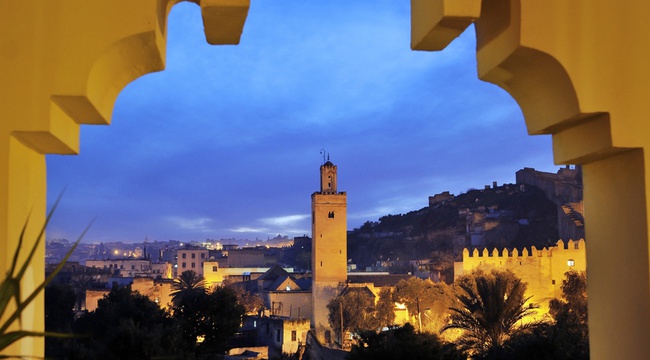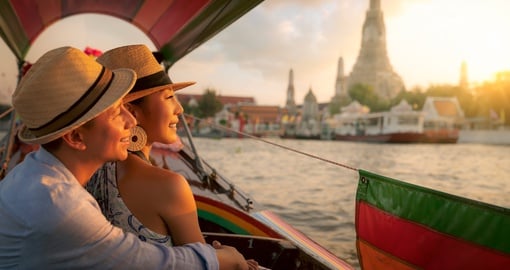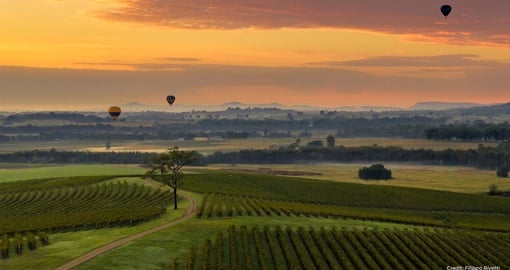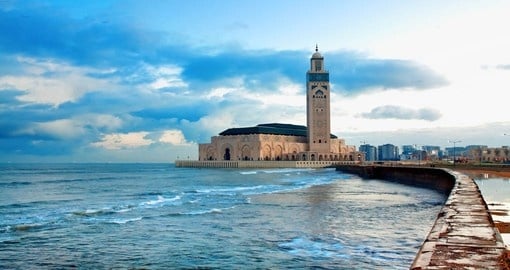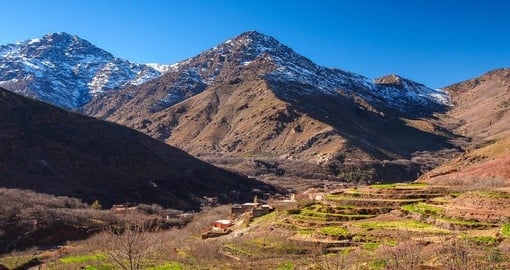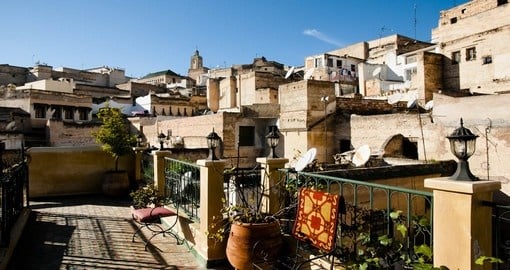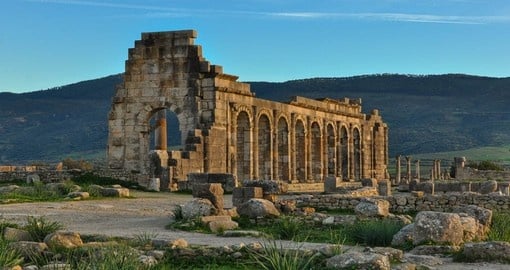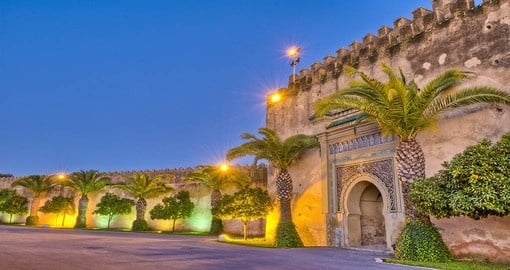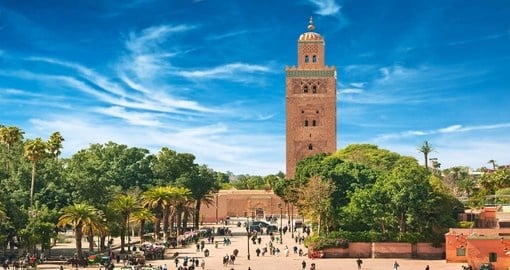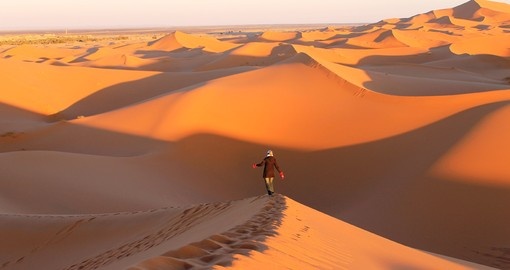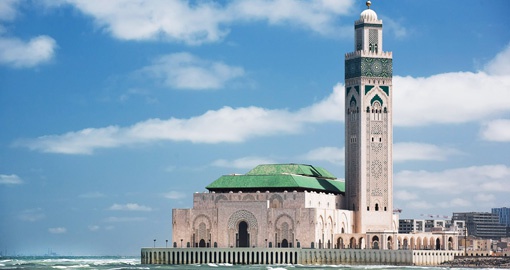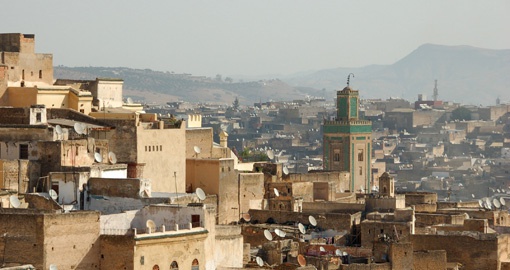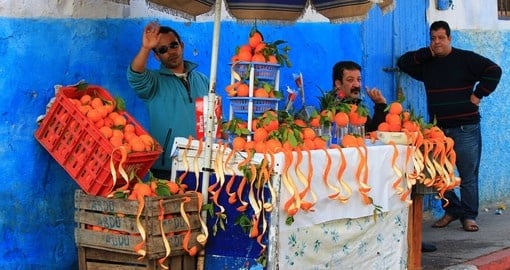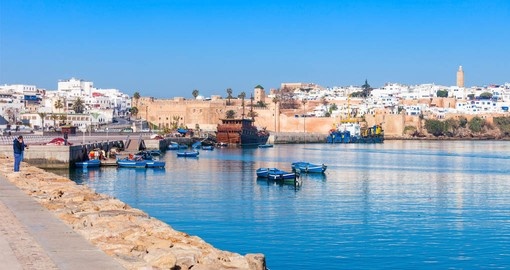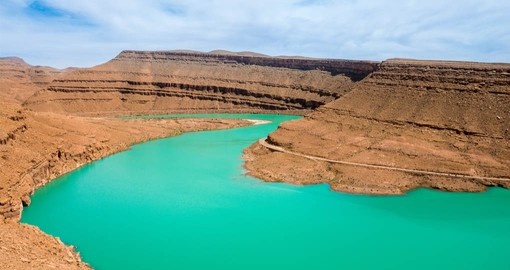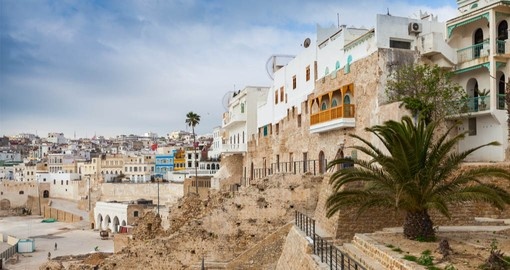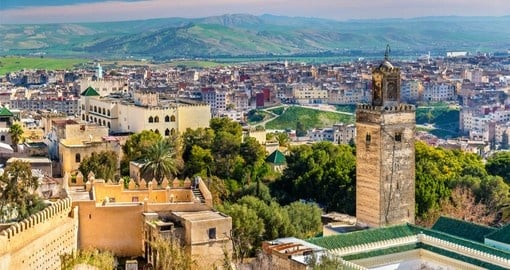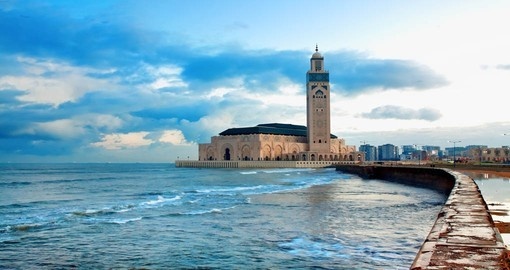Essential Facts
Currency
The official currency of Morocco is the dirham (DH). The dirham is a restricted currency, and as such, cannot be exchanged abroad. Thus, you’ll have to take out dirhams once you arrive in the country. Luckily, ATMs are easy to find across the country.
Language
Arabic is the official language of Morocco, although Moroccan Arabic is a unique dialect from other Arabic forms. Many people also speak Berber and French. English is not common outside of the major cities or tourism professions.
Best Time to Go
Located on the Mediterranean and East Atlantic, Morocco is relatively warm year-round. The most popular time to visit is during the spring, from mid-March to May, and fall, from September through October. The weather is warm, but not as warm as during the heights of summer, and the coastal regions are refreshing with the cool ocean breeze.
Climate
Morocco is generally warm, with very hot summers and mild winters. The north of the country sits along the Mediterranean and so has mild winters and hot summers. The country doesn’t get much rainfall, with more along the coastline and getting drier as you move further inland towards the Sahara. Coastal cities see average summer temperatures of 18°C/64°F to 28°C/82°F. Inland, there are higher average temperatures around 35°C/95°F. In the winter, temperatures drop to 8°C–17°C/46°F–63°F, with even cooler temperatures inland. In spring, a dry wind known as the sharqi comes in from the mountains, often forcing temperatures higher.
Ideal Traveller
Morocco is safe and hospitable, with a variety of travel options for all manner of interests. It’s particularly fascinating for history buffs, who can explore the legacy of the Islamic Empire in the cities of Fez and Marrakech, and cultural travellers who want to dine on excellent food and explore the unique sites of souks, medinas, and Berber villages. There are also many fashionable resorts along the coast, so travellers can easily enjoy a beach escape as well.
Getting There From North America
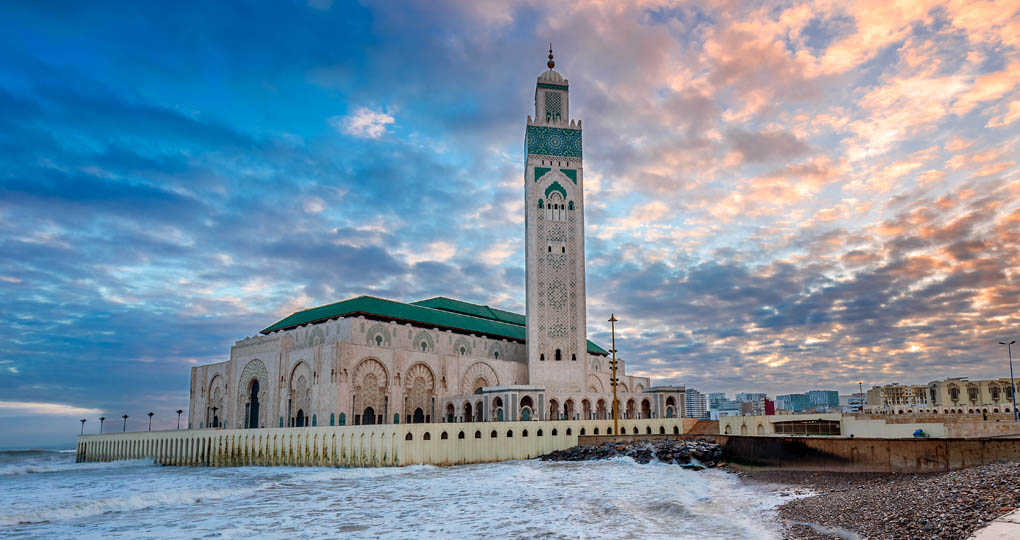
Major Airports
Casablanca Mohammed V International Airport is the main international airport in Morocco, used as a gateway to Europe and other parts of Africa. Menara Airport in Marrakech is also commonly used for international travel.
Major Air Routes from the United States
There is a direct flight on Royal Air Maroc from New York to Casablanca. It’s also easy to connect to Morocco through major European gateway cities such as Paris.
Major Air Routes from Canada
There is a nonstop flight from Montreal to Casablanca aboard Royal Air Maroc. Canadian travellers can also connect through New York or Paris.
Essential Sights of Morocco
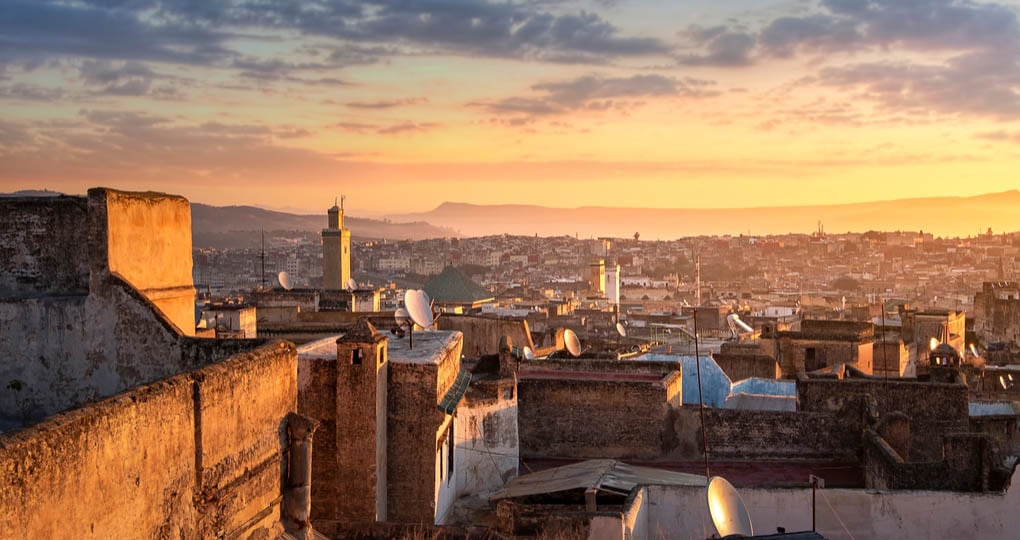
Marrakech
Located in the western part of the country, Marrakech is one of Morocco’s four former imperial capitals and one of its most popular cities. The Medina (or old walled city) is one of the densest in the country, with winding alleys and lively markets selling traditional textiles, pottery, and jewelry. Exploring it is like travelling back in time. Djemaa el-Fna, the central square, is a great place to start or end most tours through the city, as its open-air markets, many cafes and restaurants, and buskers and vendors make it lively at all times of day.
Casablanca
Now synonymous with the Oscar-winning classic starring Humphrey Bogart, Casablanca is a coastal city that remains the most European of Morocco’s major centres. Much of this has to do with its importance during the French colonial period. The architecture in the downtown reflects this history with its French avenues and European cafe atmosphere. Beyond its European roots, Casablanca is the country’s most important international gateway and beach centre. Its most famous landmark is the Hassan II Mosque, which stands alongside the water.
Fez
The nation’s medieval imperial capital, Fez is at the centre of much of Morocco’s history. Travellers can explore the winding avenues of its Medina, the oldest and best-preserved in the country. The entire old town is car-free and offers a glimpse into life during the Middle Ages with its citizens that continue traditional practices in the very buildings their ancestors lived in. Medina also has the world’s oldest continually-operating university, Kairaouine Mosque & University, which was founded as a mosque and continues to be one of the largest places of worship in Africa.
Meknes
Another of Morocco’s four imperial capitals, Meknes is often considered a quieter version of Fez. It has a stunning old Medina with souks and narrow lanes as well as ruins dating back to the imperial past. The Grand Mosque, dating back to the 12th century, lies at the centre of the Medina.
Other Highlights of Morocco Off the Beaten Path
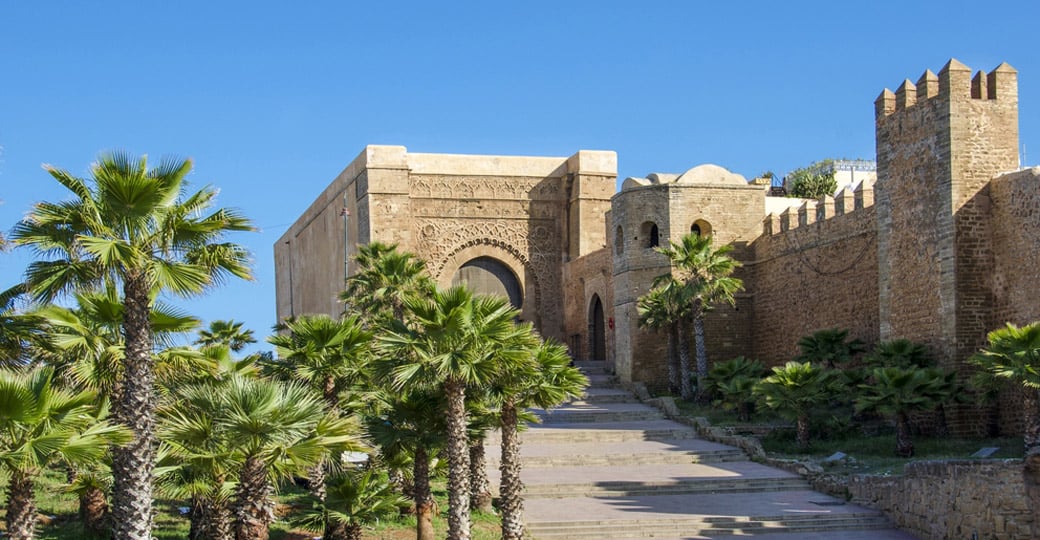
Rabat
The capital of Morocco dates back to the height of the Middle Ages, but has come to define modern Morocco as the location of the Royal Palace, home to the Moroccan Royal Family. The palace is a grand demonstration of Moroccan architecture. The palace and the Andalusian Gardens, which showcase Moorish designs similar to what is found in Spain’s Alhambra, are its most popular attractions of recent centuries. Hassan Tower, a minaret tower for an unfinished mosque dating back to the 12th century, is the most popular landmark and a reminder of the city’s past glory.
Essaouira
Formerly the site of a Portugeuse fortress, Essaouira combines medieval Moroccan landmarks with European architecture, making the city indicative of Morocco’s diverse heritage. The city lies on the Atlantic Coast and is best known for its riads (traditional Moroccan courtyard inns), which offer an uniquely Moroccan way to spend the night. The city is also popular for its artisanal crafts and cabinetwork, so you may want to visit some local shops while in town.
Tangier
The port city of Tangier is located across from Spain on the Strait of Gibraltar. As such, it’s the traditional point of entry for travellers arriving by ferry from Europe. Travellers can visit the hillside Medina to see the whitewashed former imperial palace, Dar el Makhzen, which now houses two museums or head along the coast to Cape Spartel to see the famous lighthouse that watches over the seas of the Mediterranean.
Agadir
This port city along the southeastern Atlantic Coast is the most popular resort spot in the country. It has many of the best beaches in Morocco as well as year-round comfortable temperatures. There are a variety of resorts to choose from, as well as luxurious hotels and golf courses. If you want to unwind for a couple days at the beginning or end of your vacation in Morocco, this is the spot to do it.
Top Activities and Experiences in Morocco
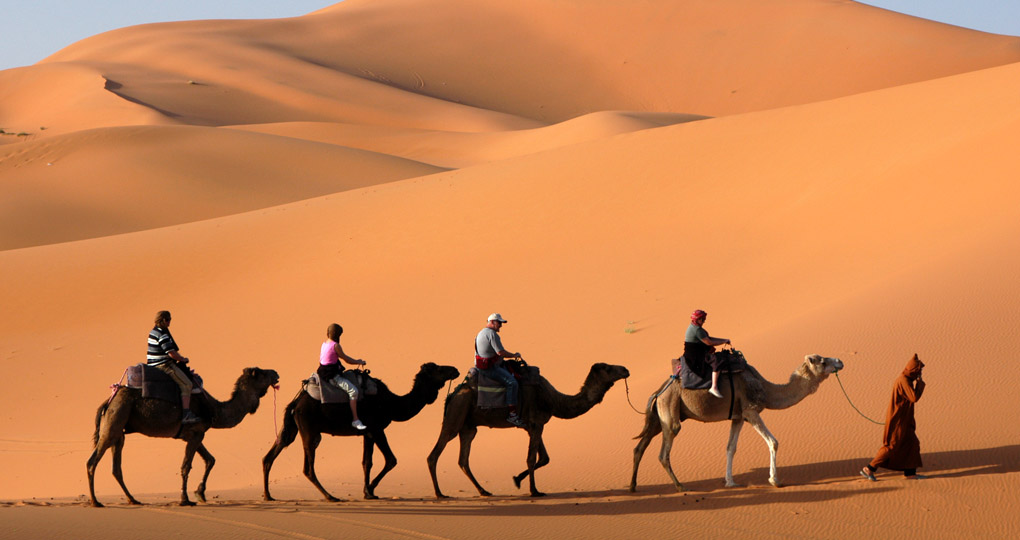
Head on a Desert Safari
A significant portion of Morocco lies in the Sahara Desert, so it’s natural to take advantage of the geography and explore the world’s most famous desert during a visit. The town of Merzouga in the eastern portion of the country is the typical gateway to the desert. Travellers can ride a camel alongside the dunes of Erg Chebbi, visit a Beber village, and even spend a night under the stars in a traditional tent. The sunrises and sunsets in the desert are especially brilliant, as is the opportunity for stargazing, as the lack of light pollution gives you unimpeded views of the night sky.
Barter for Goods in a Souk
If you visit Marrakech, Fez, or Meknes, you’re likely going to explore the narrow avenues of the city’s Medina. A visit to a Medina isn’t complete without seeing the many goods for sale in the traditional souks (markets). You’ll find all manner of goods from spices to carpets to lamps and artisanal crafts. It’s conventional to barter for the best deal, so bring along someone who speaks Arabic if you want to get the best deal. There are no better places to get souvenirs.
See the Ruins of Volubilis
This Berber and Roman city outside Meknes dates back to the 3rd-century BC and is thought to be the site of the ancient capital of the Kingdom of Mauretania. People continued to live in the city until the 11th century when it was abandoned. Today, the ruins are only partially-excavated, but many public buildings such as a basilica, temple, and triumphal arch offer insight into a Roman settlement far from the centre of the empire. It’s a great place for amateur historians to spend a day.
Visit the Choura Tannery in Fez
Chouara Tannery in the Medina of Fez is one of the oldest tanneries in the country and a popular tourist attraction. The tannery started operation in the 11th century and has been producing excellent leather goods for almost a millennium. You can shop for excellent leather goods, or simply admire the impressive sight of dozens of stone vessels filled with various dyes and liquid solutions.
Tour the Mountain Cities of Chefchaouen or Ouarzazate
Chefchaouen, located in the Rif Mountains, is known as the “Blue City” due to the blue-washed building of the old town that sprawls across the mountainside. The city has something of a sleepy, bohemian atmosphere that makes it a perfect place to stroll for an afternoon. Ouarzazate is located in the High Atlas Mountains and is best known for its massive 19th-century Kasbah, which affords exceptional views over the landscape. Be sure to visit at least one of these mountain destinations for a different experience of Morocco.
Essential Morrocan Foods to Try

Mechoui
This roasted lamb dish is indicative of the country’s excellent culinary heritage. A whole lamb is roasted in a deep fire pit of araar wood and then sliced and served alongside fresh salads and roasted vegetables. The mechoui in Marrakech is particularly famous, but you’ll find great options across the country.
Tagine
The name of this dish refers to the ceramic, cone-shaped pot that the dish is cooked in. Chicken Tagine is the most popular and has pieces of chicken braised alongside onions, garlic, lemon, olives, and various Moroccan spices in the pot and typically served atop couscous.
Couscous
Not so much a dish but the staple carbohydrate in the Moroccan diet. This dish of tiny balls of semolina wheat is often served with hearty stews or braised meats on top. The Berbers have been eating couscous for thousands of years and the dish continues to be a staple across North Africa today.
Khobz
Like couscous, khobz is a key part of most Moroccan meals. It’s a flatbread typically made from semolina wheat and cooked in a hot oven until it rises about an inch thick. There are also thinner versions that are cooked in a pan. The bread is usually torn and used to scoop up bits of meat or sauces.
Tips for Sustainable Travel
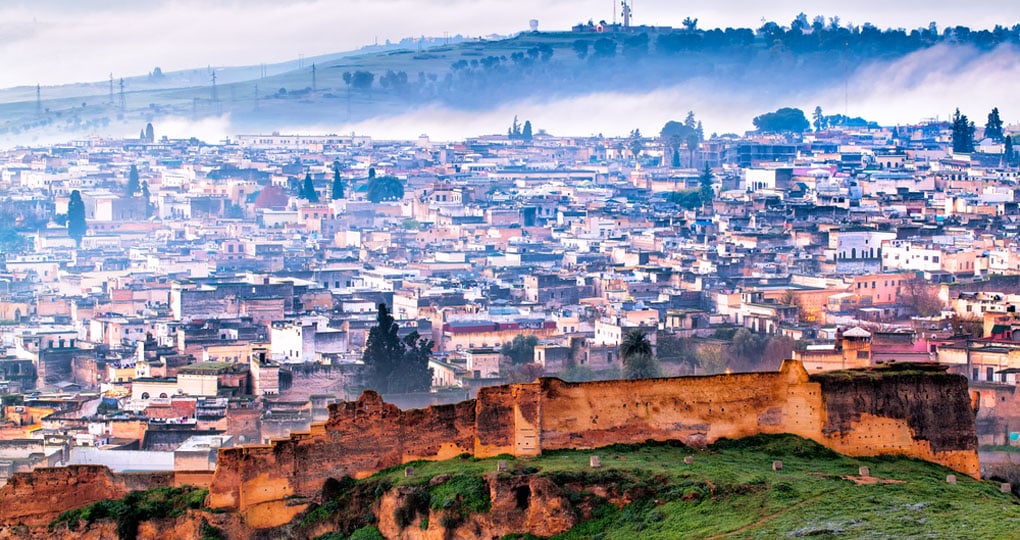
Unlike in many other countries across the world, sustainable travel hasn’t caught on in Morocco, partially due to economic conditions and partially due to the lack of governmental oversight. As such, it’s hard to find eco-friendly tours or green accommodations across the country. That being said, it’s important to travel with reliable tour companies that work with local partners to preserve the natural environment and historical landmarks across the country. It’s also key to buy products from artisans and shopkeepers in souks, supporting local economies in the process, and avoid purchasing any animal products or anything that may come from endangered species. When you visit the desert, be mindful not to waste water and conserve energy where you can. In the summer months, Morocco can get very hot and air conditioning becomes a premium, but try to conserve energy by wearing loose clothing and dressing in white.
Where to Go Next
It’s easy to connect onward to other countries in North Africa, including Tunisia and Egypt. Travellers can also ride the ferry across the Strait of Gibraltar to Spain and Portugal or fly into France and continue exploring Europe. Alternatively, you can connect onwards into East Africa to pair a safari with a trip through North Africa.
Most Popular Itineraries for Morocco
Imperial Morocco is an ideal introduction to the nation, taking you to the imperial cities of Marrakech, Meknes, and Fez before experiencing the Mediterranean-atmosphere of Casablanca. Majestic Morocco expands the tour to include the mountain cities of Ouarzazate and Merzouga as well as the capital, Rabat. The Best of Morocco takes you through the country on an in-depth tour that starts and ends in Casablanca. Journey through the imperial cities before passing into the High Atlas Mountains and the Sahara Desert before travelling along the coastal road back north.
9 Nov 2020, 8 p.m.


